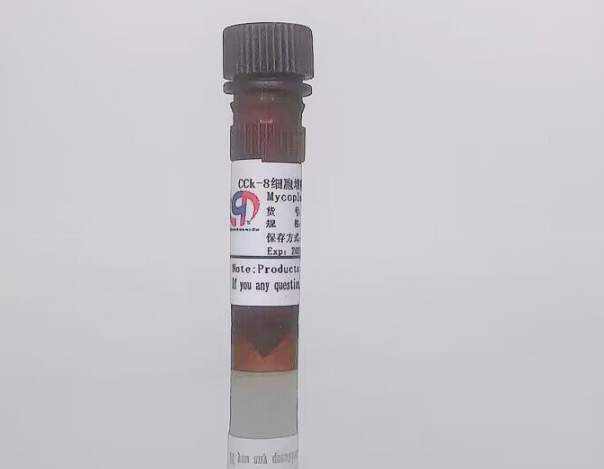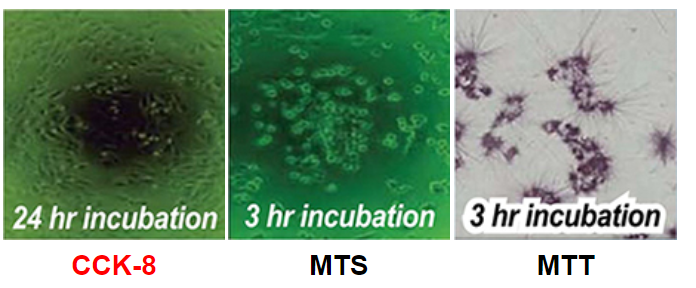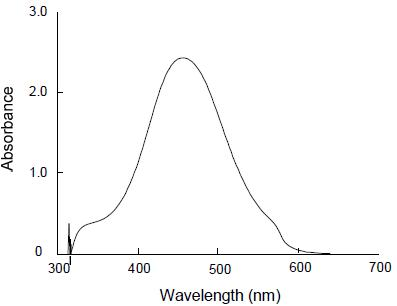Technical Support技术支持
CONTACT US
 400 179 0116
400 179 0116
24-hour service hotline marketing@ldraft.comE-mail
marketing@ldraft.comE-mail
My history with the CCK-8 experiment
source:QiDa technoligy views:1861 time:2024-08-09
重点词汇
2910/5000
通用场景
My history with the CCK-8 experiment
Before the experiment, the boss will say, if you do not think well, first click a CCK8, so CCK8 has become the first choice for the experiment;
First explain the origin of CCK8:
CCK-8 test, or Cell Counting Kit-8 test, is a widely used experimental method for cell proliferation and cytotoxicity detection. This method originated from the need for cell proliferation and toxicity analysis, aiming to provide a simple, accurate and highly sensitive assay.
The main principle of the CCK-8 experiment is based on the core component of its kit, WST-8 (chemically known as 2-(2-methoxy-4-nitrophenyl)-3-(4-nitrophenyl)-5-(2, 4-benzene disulfonate) -2h-tetrazole monosodium salt). Regarding the concentration of WST-8 in the CCK-8 reagent, which is usually determined by the reagent manufacturer based on experimental needs and optimization results, the concentration of WST-8 in different commercial CCK-8 kits may vary.
In living cells, WST-8 is reduced by mitochondrial dehydrogenase to the water-soluble orange Formazan. The amount of this product produced is proportional to the number of living cells, so the number and proliferation of living cells can be indirectly reflected by measuring the color depth of the solution after the reaction.
CCK-8 experiment has many advantages, such as simple operation, time-saving, high sensitivity, wide linear range, reliable data and good reproducibility. In addition, the CCK-8 experiment is less toxic to cells, without the use of radioactive isotopes and organic solvents, so it is safer and more environmentally friendly. This makes CCK-8 test widely used in cell biology, pharmacology, oncology and other fields, such as cell proliferation rate comparison, material toxicity evaluation, new drug screening, tumor drug susceptibility test and so on.

What does CCK-8 do? The specific operation steps come:
1. Cell number measurement
1. Inoculate the cell suspension (100μL/ well) into the 96-well plate. Preincubate plates in a humidified incubator (e.g., at 37°C, 5%CO2).
2. Add 10μL CCK8 solution to each hole of the plate. Be careful not to introduce air bubbles into the well, as they can interfere with the outside diameter reading.
3. Incubate the culture plate in the incubator for 1-4 hours.
4. Use an enzyme marker to measure the absorbance at 450nm.
Cell proliferation and cytotoxicity tests
1. Seed cells were inoculated in 96-well plates with a density of 10^3-10^4 cells/holes in 100μL medium to be tested, and cultured in a CO2 incubator at 37°C for 24 hours.
2. Add different concentrations of the substance to be measured into the plate.
3. Incubate the plate in the incubator for an appropriate amount of time (e.g. 6, 12, 24 or 48 hours).
4. Use a repeat pipette to add 10μL CCK8 solution to each hole of the plate. Be careful not to introduce air bubbles into the well, as they can interfere with the outside diameter reading.
5. Incubate the culture plate in the incubator for 1-4 hours.
6. Before reading the plate, it is important to mix gently on the track oscillator for 1 minute to ensure an even distribution of colors.
7. Use an enzyme marker to measure the absorbance at 450nm.
3. Data analysis
There are several ways to perform statistical analysis. You can choose to use the O.D. value or the cell number, as follows is one of my common calculations:
Cell survival rate (%) =[(As-Ab)/(Ac-Ab)]×100
Inhibition rate (%) =[(Ac-As)/(Ac-Ab)]×100
As= Absorbance of the experimental hole (cell, medium, CCK8, and test compound hole).
Ab= blank hole absorbance (absorbance of holes containing medium and CCK8).
Ac= control hole absorbance (absorbance of holes containing cells, media, and CCK8).
4. Draw standard curves
1. The cell counting board counts the number of cells in the cell suspension.
2. Using a medium, dilute the cell suspension to a concentration gradient, usually 5-7 concentration gradients, with several repeat Wells per set. I usually repeat three and then inoculate the cells. Note the number of cells in each hole. If you dilute the cell suspension in the centrifuge tube, mix it again before adding the orifice plate. The volume of cell suspension in each well should be the same.)
3. Incubate until cell adhesion (usually 2-4 hours), then add 10μl CCK8 per 100μl medium. The incubation was continued for 1-4 hours, and the absorbance at 450nm was measured with an enzyme label. A standard curve is drawn with the number of cells as the X-axis coordinate and the outer diameter value as the Y-axis coordinate.
A quick reminder: the number of cells in the sample to be tested can be determined according to the curve. The prerequisite for using this standard curve is the same culture conditions.

CCK-8 detection of T24 stable transmutation strain, detection concentration unit was ug/ml
The CCK-8 pit has to be avoided, and although all roads lead to Rome, we can't fall into a pit on our way to Rome
1. Ensure that the drug and CCK8 are evenly distributed in the medium.
2. The more cells proliferate, the darker the color; The more cytotoxic, the lighter the color.
3. For adherent cells, at least 1000 cells per well (100μl medium). For white blood cells, at least 2,500 cells per well (100μl medium) are required due to their low sensitivity. The recommended maximum number of cells per well for a 96-well plate is 25,000. If the test is performed using 24-well or 6-well plates, the corresponding number of cells per well is calculated and the volume of CCK8 is adjusted to 10% of the total liquid volume per well.
4. Because the CCK8 assay is based on dehydrogenase activity in living cells, conditions or chemicals that affect dehydrogenase activity may cause a difference between the actual number of living cells and the number of living cells measured using CCK8.
5.WST-8 can react with reducing agent to form WST-8 methylazine. If a reducing agent (such as some antioxidants) is used, it will interfere with the test. If more reducing agents are present in the system under test, it is necessary to remove them.
6. After 2 hours of incubation, the background O.D. value is usually 0.1-0.2 units.
7. Be careful not to introduce bubbles into the hole, as they will interfere with the outside diameter value.
8. If you want to disinfect CCK8 solution, use 0.2μm membrane filtration solution.
9. Incubation time will vary according to the type and number of cells in the hole. In general, white blood cells are lighter in color and may require a longer incubation time (up to 4 hours) or a large number of cells (about 105 cells/Wells).
10. If there is high turbidity in the cell suspension, measure and subtract the O.D value of the sample at 600 nm or higher.
11.CCK8 cannot be used for cell staining.
12. Phenol red in the medium did not affect the experimental results. When calculating, the absorbance of phenol red can be eliminated by subtracting the absorbance of the background in the blank hole, so the detection will not be affected.
13. The toxicity of CCK8 is low. After the CCK8 assay is completed, the same cells can be used for other cell proliferation assays, such as crystal violet assays, neutral red assays, or DNA fluorescence assays. (It is not recommended unless the cells are extremely rare.)
14. The CCK-8 kit can be used for E. coli, but not for yeast and other fungi.
15. Before testing the hole plate, you can gently shake it on the shaker 30S is enough.
16. We recommend that cells be inoculated in a hole near the center of the plate. The medium in the outermost hole evaporates easily and can be filled with PBS, water or medium.
17. If you don't have a 450nm filter. You can also use filters with absorbance between 430 and 490 nm, as well as 450 nm filters for optimal sensitivity.
18. Measure the absorbance at 450nm. If dual-wavelength measurements are required, the absorbance at 650nm can be determined as the reference wavelength.
19. The presence of metal ions in drugs may affect the sensitivity of CCK8. The final concentration of 1mM of lead chloride, ferric chloride and copper sulfate inhibited the color reaction by 5%, 15% and 90%, and reduced the sensitivity. If the final concentration is 10mM, it will be 100% suppressed.
Experiments show that the sensitivity of CCK-8 is higher than that of MTS and MTT:

Experiments have shown that only CCK-8 allows cells to survive longer:

with WST-8 absorption spectrum:

CCK-8 benefits are coming, forward the article to the corresponding sales, enjoy the CCK8 100T kit experience price: 88 yuan/piece, or buy cells to send a CCK-8 100T kit.







